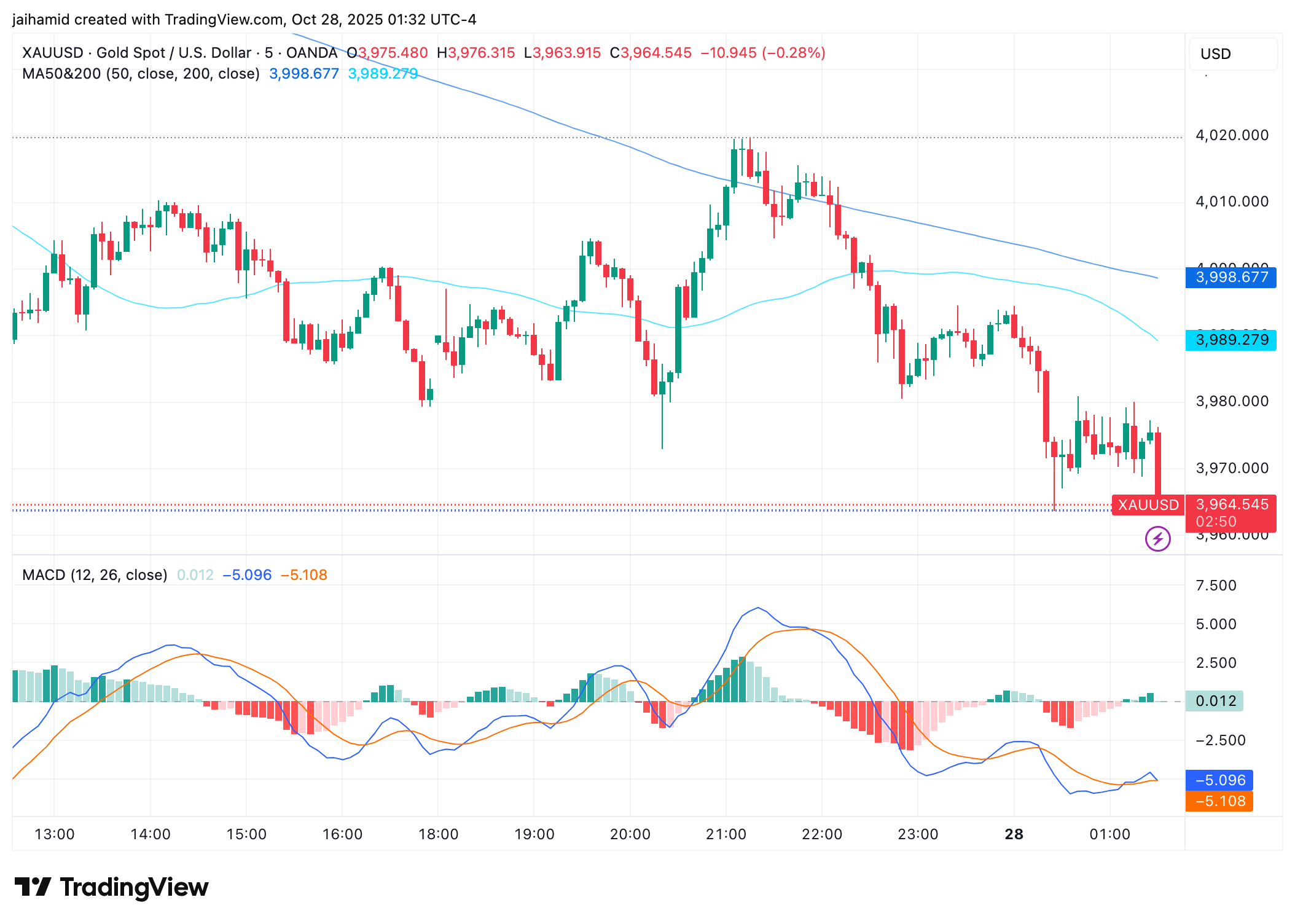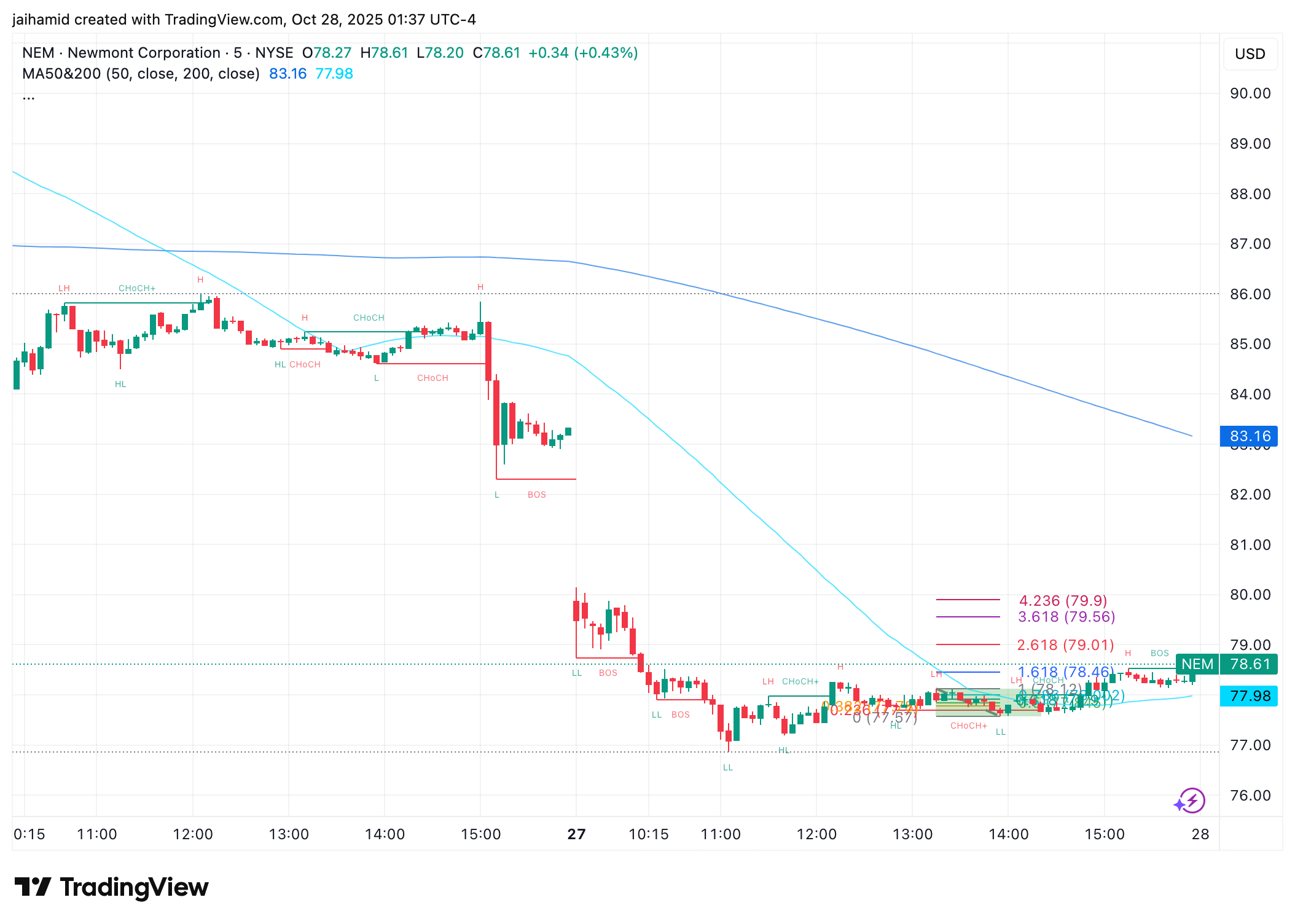Gold prices are entering a consolidation phase after reaching $4,400 per ounce, with analysts predicting a pause until 2026 before the next upward move. This correction reflects overbought conditions following a 55% yearly surge, offering traders a chance to reassess positions amid key support levels.
-
Gold’s recent drop below $4,000 signals short-term bearish momentum via MACD sell indicators.
-
Weekly stochastics indicate potential multi-week declines within a new trading range up to $4,358.
-
Mining stocks like Newmont Corp. have fallen below their 50-day moving averages, with support at $75 and deeper levels at $60, per 38.2% Fibonacci retracement data.
Explore gold price consolidation in 2025: After a rally to $4,400, the metal pauses amid overbought signals. Key supports and central bank strategies revealed—stay informed on reserve debates and trading insights for smarter investments.
What Is Causing Gold’s Price Consolidation in 2025?
Gold price consolidation in 2025 stems from the metal’s exhaustion after a prolonged rally that pushed it to record highs above $4,400 per ounce. Technical indicators, including a bearish MACD crossover and declining weekly stochastics, point to a necessary pause for momentum reset. Analysts view this as a healthy correction rather than a reversal, allowing the market to digest substantial gains exceeding 55% year-to-date.
How Are Gold Mining Stocks Reacting to This Consolidation?
Gold mining stocks are mirroring the broader metal’s slowdown, with major players like Newmont Corp. (NEM) breaching their 50-day moving averages for the first time in nearly a year. This bearish development highlights fading short-term strength, as the 20-day moving average has also reversed. Supporting data from TradingView charts shows NEM testing support near $75, aligned with the 38.2% Fibonacci retracement, while deeper defense lies at the 200-day average around $60. Katie Stockton, a noted technical analyst, describes this as part of a counter-trend adjustment, emphasizing that overbought conditions necessitated profit-taking among investors.
 Source: TradingView
Source: TradingViewTraders are closely monitoring gold’s potential breach of $3,927 per ounce, which could accelerate declines toward the rising 50-day moving average at approximately $3,766. Historical patterns from similar chart setups suggest these pullbacks can extend for weeks or even months, forming the upper boundary of a trading range near the recent peak of $4,358. This phase, according to Stockton, may persist well into 2026 before renewed bullish momentum emerges.
 Source: TradingView
Source: TradingViewWall Street perspectives reinforce this outlook, treating the downturn as a temporary reset in an otherwise strong uptrend. The metal’s overextension after months of relentless gains made such a consolidation inevitable, providing a window for strategic repositioning. Both bullion and related equities now face extended sideways action, underscoring the need for patience among long-term holders.
Frequently Asked Questions
What Support Levels Should Traders Watch for Gold in 2025?
In 2025, key support for gold prices includes the $3,927 per ounce level, with further downside risks targeting the 50-day moving average near $3,766. These thresholds, drawn from technical analysis, could define the lower end of the current consolidation range. Breaching them may signal deeper corrections, but analysts like Katie Stockton anticipate a prolonged pause rather than a full reversal.
Why Is the Philippine Central Bank Debating Gold Reserve Sales?
The Bangko Sentral ng Pilipinas is weighing sales of its gold reserves because they comprise about 13% of its $109 billion in gross reserves, exceeding the ideal 8-12% range compared to regional peers. Former governor Benjamin Diokno highlighted acquisition costs around $2,000 per ounce and risks of price declines, prompting discussions on profit-taking. Current governor Eli Remolona maintains a conservative stance, viewing gold primarily as a hedge against negative average returns from speculation.
Key Takeaways
- Consolidation Phase: Gold’s pullback from $4,400 reflects overbought conditions, with technical indicators like MACD confirming short-term bearish shifts.
- Mining Stock Pressures: Companies such as Newmont Corp. are testing critical supports at $75 and $60, driven by profit realization after strong yearly performance.
- Central Bank Strategies: The Philippine BSP’s reserve debate underscores diversification efforts, including euro and yen exposure, while avoiding speculative trades in a volatile market.
Conclusion
Gold price consolidation in 2025 marks a pivotal breather after an extraordinary rally, with technical signals and mining stock movements pointing to a multi-month stabilization potentially lasting until 2026. Authoritative voices, including Katie Stockton’s analysis and Philippine BSP discussions led by Benjamin Diokno and Eli Remolona, highlight prudent management amid excess reserves and overbought dynamics. As markets navigate this counter-trend move, investors should focus on support levels and diversification to position for future opportunities in precious metals.





